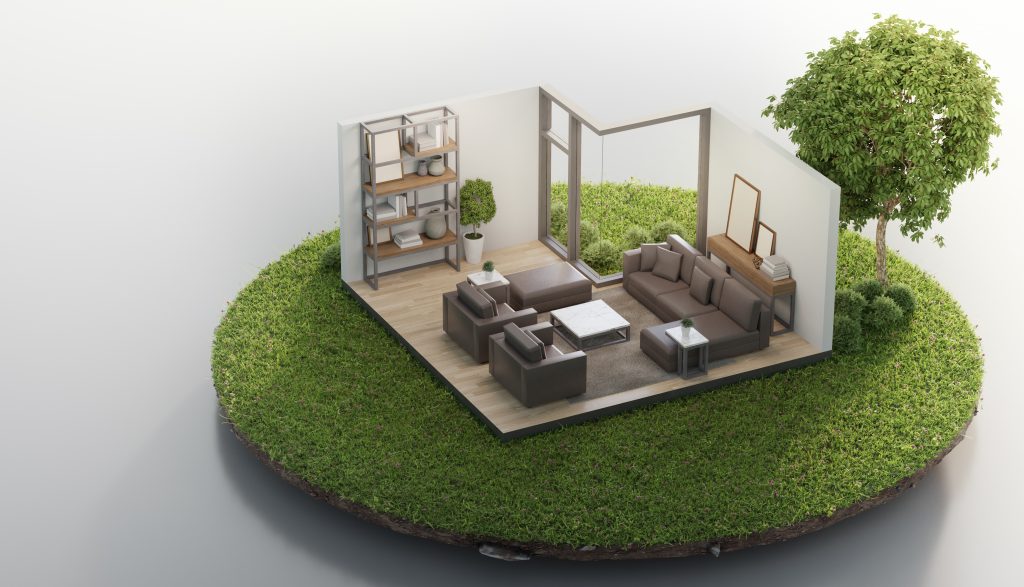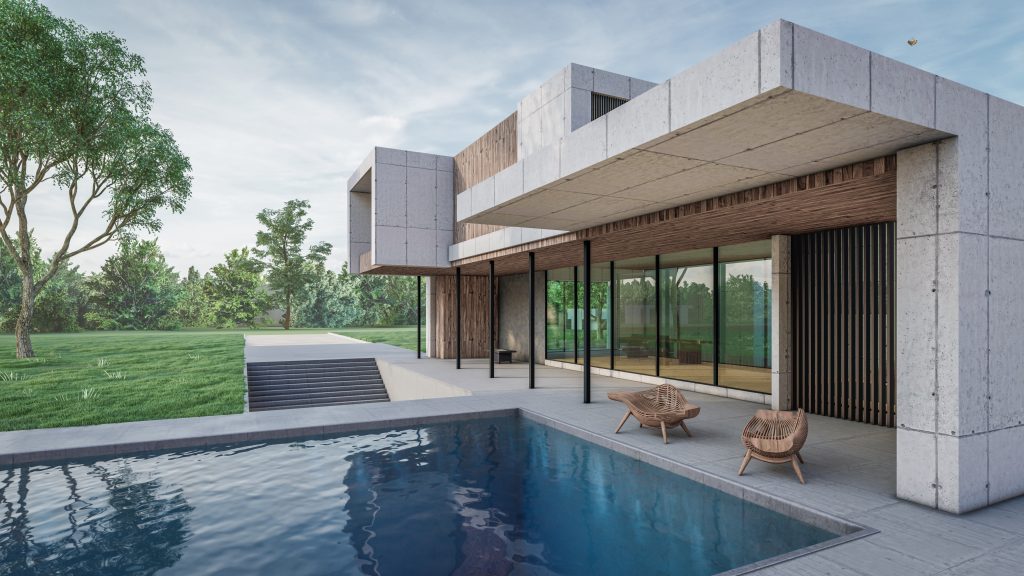The tiny house trend isn’t just about saving money, it’s also about sustainability.
What are tiny houses?
The official definition of a tiny house is:
A dwelling that is 400 square feet (37 sq m) or less in floor area excluding lofts.
The typical tiny house is between 100 and 400 square feet. To put that in perspective, the average American home in 2017 was over six times that size at 2,631 square feet. These average larger homes are greatly impacting the environment. For example, large houses usually lead to larger energy consumption, loss of land, and increased air pollution. Owners of larger homes with more rooms typically use more furniture and appliances, resulting in a larger environmental footprint. Tiny houses aim to combat environmental inefficiencies by encouraging occupants to live a simpler, more sustainable life within a smaller space.
The history of the tiny house movement
While the tiny house trend seems to have peaked during the new millennium, people have been residing in tiny homes for far longer than that. In 1854, renowned American philosopher and writer Henry David Thoreau published Walden, which documented his experience living in a 150 square foot cabin beside Walden Pond near Concord, Massachusetts. Hailed as an American literary classic, Thoreau’s reflection focused on simple living and embracing nature, and he unknowingly set the stage for tiny house enthusiasts decades later.
Over a hundred years later came the publishing of Shelter, by Lloyd Kahn and Bob Easton, which explored indigenous construction and architecture, as well as tiny homes found around the world. More literary references to tiny houses were to follow, but it wasn’t until 1999 with the introduction of the Tumbleweed Tiny House Company, that tiny houses really became a major trend in the U.S. Since then, the tiny house trend has exploded. This is likely being fueled by a combination of factors, including the looming threat of climate change urging citizens to live more sustainably and the 2008 housing subprime mortgage crisis evoking a necessity for smaller, more affordable living situations.
Tiny house design
Building individual tiny houses provides the opportunity for creative freedom, while being environmentally friendly with minimal material use and waste. Designers can choose from an array of design options, making tiny homes highly desirable for homeowners looking to have minimal esthetic for their home.
Due to the small size of these homes, owners or planners are not confined to traditional HVAC systems for heating and cooling. Tiny House Blog provides suggestions such as wood stoves, propane heaters, radiator heaters, electric heaters, or a mini-split. The positioning and mobility of tiny houses vary, with some residing on a plot of land to others with wheels and attached to a vehicle, like a trailer.
Tiny house technology
Tiny houses existed long before 1999, but new technology provides the opportunity to build modern, minimalistic, and aesthetically appealing homes.
Covo Tiny House Company in Portland, Oregon, uses smart technology like smartphone-controlled lighting, a smart door lock, and voice assistance in the tiny houses they build. Wheelhaus in Salt Lake City, Utah are LEED certified.
Solar panels are another great option for owners looking to increase the energy efficiency of their tiny house. Since they use less energy, solar power helps owners save on utility bills. They also are the most convenient and logical option for houses on wheels, as searching for an energy source is often an issue on the go. Mobile power is also beneficial as it enables Internet access almost anywhere. Additionally, solar panels can add value to the tiny house overall.

How tiny houses are sustainable
Tiny houses are more ecologically friendly because their small size minimizes the damage to the local ecosystem. That’s just one of the reasons that they’re an environmentally conscious choice.
For one, the construction phase requires significantly less material to build. That means that it also uses less energy throughout the construction life cycle. Also, the materials used can be chosen mindfully in order to avoid hazardous consequences to the planet and people in it.
Tiny houses are also more sustainable because they allow the creation of subdivisions, or plots of land that multiple tiny house owners live on. The trend of “less is more” is rising and utilizing one plot of land for multiple homes is ecologically beneficial. The environmental footprints among 80 tiny house owners across the U.S. were reduced by 45% when they moved from a larger, traditional American home into their tiny house.
Lastly, tiny houses can accommodate traditional amenities and utilities, but many tiny house owners opt for more ecologically friendly arrangements. These may include composting toilets or solar panels.
Zoning laws and building codes
While tiny houses are an energy-efficient and practical housing style, it’s important to take a city’s specific zoning laws into consideration. Certain zoning laws require new construction homes to be a specified size or are restricted as to where they can reside. There are also building codes that set requirements for the size of each room, depending on the number of people residing in the home.
Some suggest building a tiny house on wheels is the best option because there are fewer restrictions and it can be registered as an RV.
Why tiny houses?
Building tiny houses is ecologically beneficial and supports a lifestyle healthy trend. With new technology and sustainable freedom, builders can design modern and tech-savvy houses to meet the demands of the environment.


